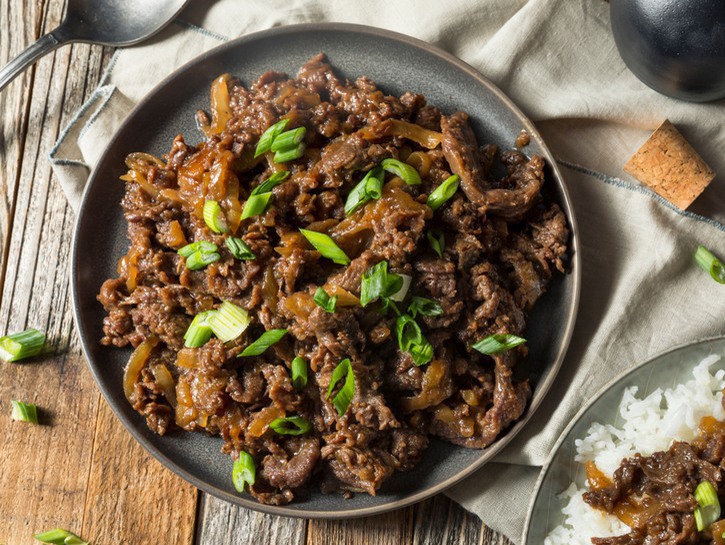What Is Bulgogi?
You probably saw bulgogi on the menu at the last Korean restaurant you went to, but what exactly is it? Pronounced “buul-goh-ghee,” the Korean favorite literally translates to “fire meat” and is a staple in Korean BBQ. Bulgogi is made with the highest quality meat and marinated to perfection. Typically, bulgogi will be beef, however, it can also be made with tender parts of pork or chicken if specified.
History Of Bulgogi
Bulgogi originated a long time ago in Korea’s Gorguryeo era (37 BCE – 668 CE). The dish started out as a kabob-like meat skewered over an open flame called “maekjeok.” This eventually evolved into a dish called “seoryamyeok,” which marinated beef soaked in cold water. By the early 20th century, a dish consisting of thinly-sliced marinated beef called “neobiani” became favorite by Korea’s noble class. As time went on and Korea’s beef industry became more commercialized, neobiani became what is now known today as bulgogi and is still considered one of Korea’s most popular foods.
What Cut Of Beef Is Used?
Bulgogi isn’t your standard beef. To be considered good enough for the royals, bulgogi requires the highest quality cuts of meat. Sirloin, tenderloin, brisket or ribeye are typically the go-to among Korean chefs. These cuts are known for being more juicy and having more flavor than other cuts, so they’re perfect for grilling or pan frying.

How To Prepare Bulgogi
Beyond having a high quality cut, there are two things that make bulgogi stand out from your average beef: the slice and the marinade.
Slicing Bulgogi
Bulgogi is served very thinly sliced. Slicing the beef thin enough for bulgogi standards takes precision, so you’ll want to make sure your knife is sharpened beforehand. If you’re not the most experienced chef, you can always buy pre-cut bulgogi from a Korean butcher. However, if you want to cut the meat yourself, follow these tips.
- Remove the meat from its packaging and wrap each cut individually with saran wrap. Then, place the meat on to a baking tray.
- Place the tray into the freezer and keep it in there for two to two and half hours. Having half frozen meat makes slicing it into thin pieces much easier. You’ll know the meat is ready if you can slice through it smoothly without any difficulty.
- Remove the meat tray from the freezer and remove the saran wrap from each filet. Thinly slice the meat across the grain. The slices should be no thicker than 3mm (1/8 inch).
Marinating Bulgogi
Once your beef is sliced to perfection, it’s ready to start marinating. The marinade is the most essential part of bulgogi because it’s what gives its delicious flavor. A great bulgogi marinade consists of these ingredients:
- soy sauce
- brown sugar
- Korean pear / Asian pear / Nashi pear
- garlic
- ginger
- ground black pepper
- sesame oil
If you don’t live in Korea, finding Korean or Asian pears in your grocery stores may be difficult. If they are not available to you, red apples, kiwis, and pineapple are common substitutes.
Cooking Bulgogi
There are two methods in which bulgogi is typically cooked: pan frying and grilling. Both are delicious methods, but bring different flavors to the dish. Pan frying bulgogi with vegetables is great is you want to eat it with rice or are meal prepping. Char-grilling bulgogi gives the beef a slightly charred and smoky flavor and is the style you’d get at a Korean BBQ joint.

Eating Bulgogi
Once the bulgogi is cooked, there are plenty of ways to eat it. Bulgogi is often served with lettuce to make lettuce wraps. You can also serve it with rice and a side of kimchi. If you’re feeling more adventurous, you can always try out these recipes.
